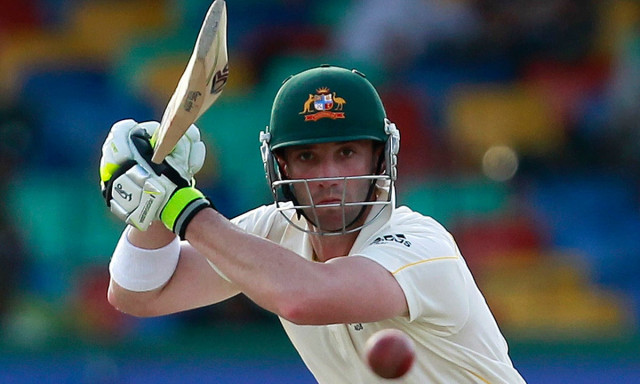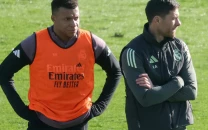Hughes’ death ‘inevitable’ after blow, inquest told
Australian cricketer passed away in 2014 after he was struck in the neck by a ball travelling at high speed

Phillip Hughes. PHOTO: REUTERS
Hughes, who played 26 Tests, died from bleeding on the brain in November 2014 after being hit on the base of the skull by a rising ball while batting in a domestic match at the Sydney Cricket Ground.
“Quite clearly the death was a terrible accident,” said Coroner Michael Barnes at the opening of the inquest. “But that does not mean that cricket cannot be made safer.”
The death of Hughes, a 25-year-old who had risen through the ranks to play for his country, stunned Australia and the world cricket community, sparking an outpouring of grief.
In her opening address, counsel assisting the coroner Kristina Stern said that Hughes had been excited about playing that day, with his mother and sister watching from the stands, as he worked to regain a place on the national team.
He had opened the batting for South Australia in the domestic Sheffield Shield match against New South Wales. He was still at the crease after lunch and playing well.
Australia’s raconteur bowler Max Walker dead at 68
 Spectators observe a minute's silence in tribute to Hughes. PHOTO: AFP
Spectators observe a minute's silence in tribute to Hughes. PHOTO: AFPBut he tried to hook a delivery from Sean Abbott which ultimately hit him in the neck, causing him to step to the side before collapsing to the ground face first, making no effort to break his fall.
Footage of the blow and Hughes’ collapse was played in the court, with some of his family leaving the room.
Fellow cricketers and medical staff raced to help Hughes, but Stern noted that the first person to call for an ambulance was unaware of the severity of the injury and that it took about an hour to get him to a nearby hospital.
However, she said none of that seemed to have had an effect on Hughes’ death which “appears to have been inevitable from the point of impact”. Nor did there appear to be any defect on the helmet he was wearing at the time, she added.
“The area that Phillip Hughes was hit was an area of his neck on the left hand side which was unprotected,” she said.
Hughes was taken to hospital where he underwent scans and surgery but died two days later on November 27, 2014.
Australia's 'mystery' spinner Gleeson dies aged 78
 Australian flag flies at half mast at the Sydney Cricket Ground. PHOTO: AFP
Australian flag flies at half mast at the Sydney Cricket Ground. PHOTO: AFPA spokesperson for the Hughes family, his former manager James Henderson, said in a brief statement outside the inquest that it would be a “very, very, very difficult week”.
“They haven’t been looking forward to this week, as you would imagine,” he said. “They’re hoping that perhaps there will be (something) positive out of Phillip’s death as we go through this next five days inside the coroner’s court.”
New South Wales state coroner Barnes is examining the manner and cause of Hughes’ death and also has jurisdiction to make recommendations, particularly in the interest of public health and safety. The findings may come on Friday, but could take weeks.
He will hear from several players there on the day, including Brad Haddin and Dave Warner.
An independent review into the death, ordered by Cricket Australia, has already been carried out and recommended earlier this year that helmets be compulsory for batsmen and fielders near the wicket.
It also suggested substitutes be considered for concussed players, while ruling that the medical treatment Hughes received was appropriate and timely.
Cricket Australia chief executive James Sutherland said the inquest would be an “emotionally challenging time” for everyone involved.
“We do hope that something good comes from this process,” he said.



















COMMENTS
Comments are moderated and generally will be posted if they are on-topic and not abusive.
For more information, please see our Comments FAQ